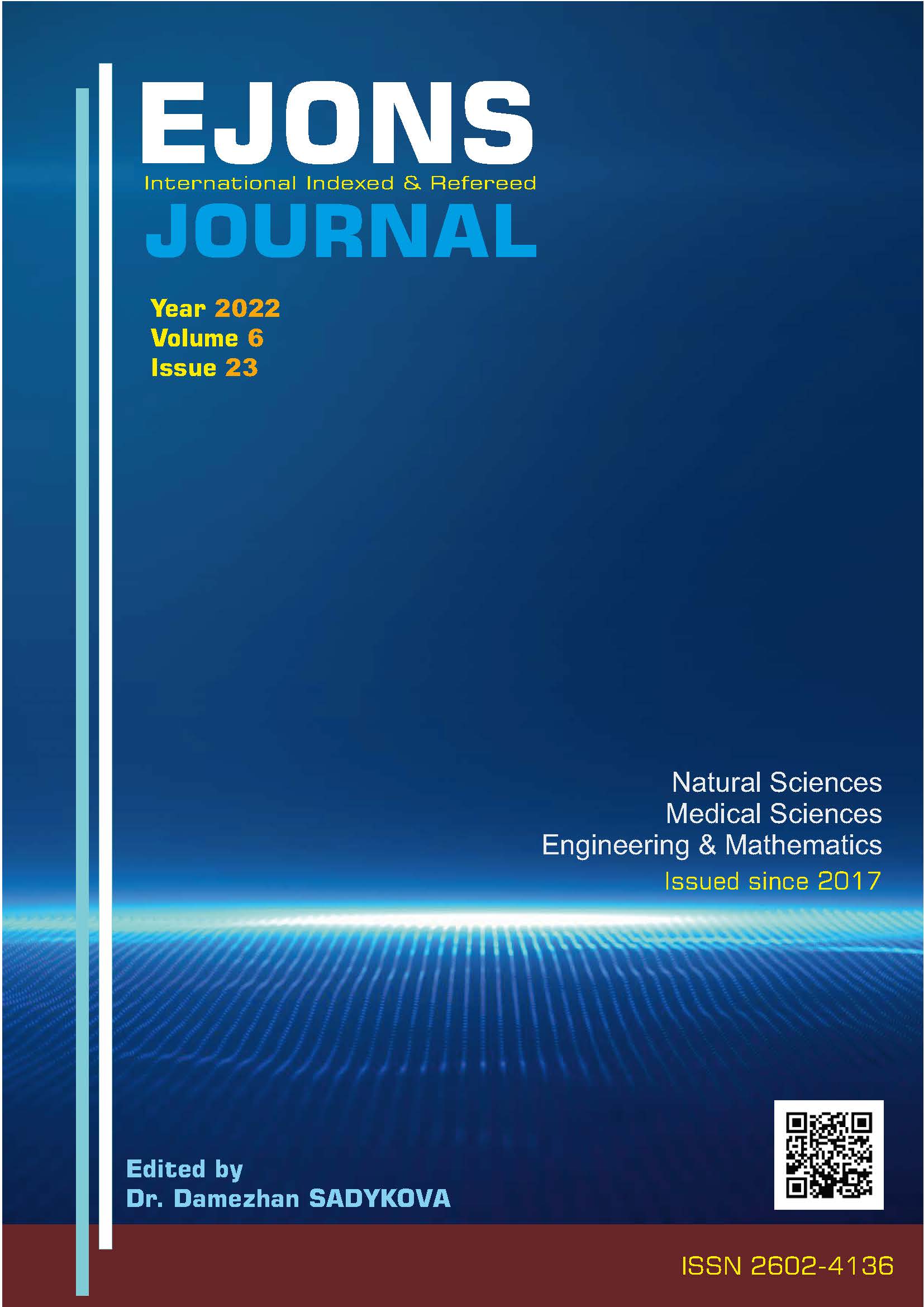A COMPARATIVE EXAMINATION OF THE AWARENESS LEVELS OF OCCUPATIONAL HEALTH AND SAFETY OF STUDENTS IN VOCATIONAL AND TECHNICAL ANATOLIAN HIGH SCHOOLS
DOI:
https://doi.org/10.5281/zenodo.7501541Abstract
Occupational health and safety; is to take the necessary measures to ensure that the employees have a complete physical and mental well-being. Occupational health and safety covers the measures taken to minimize the risk of occupational diseases and to minimize injuries and deaths in case of occupational accidents. As a result of these studies and the measures taken, it is aimed to minimize the damages to the state and companies due to accidents. Taking occupational health and safety measures and providing trainings in this context are also of great importance so that our national wealth is not wasted (Güngör, 2017).
Students enrolled in Vocational and Technical Anatolian High Schools or transferred from other high schools, on the first day of their education, are provided with insurance against occupational diseases and work accidents by the school administration within the scope of the Vocational Education Law No. 3308. In this context, students who are studying in vocational schools are subjected to 12 hours of basic occupational health and safety training in the week when education starts. While some of the students who have completed their education in Vocational and Technical Anatolian High Schools continue, the majority of them directly participate in working life and start their business life as employees or employers. In this context, the occupational health and safety education that students will receive in high school education is of great importance.
With this study, it was determined at what level the 9th grade students, who were given training in the field of occupational health and safety for the first time, were affected by these trainings. In addition, the continuation of these trainings in the following grade levels and the frequent mention of occupational health and safety issues in some courses, and the comparisons were made by determining what kind of changes occurred in the thoughts of the students when they came to the 12th grade. In this study, it was tried to determine how and how much the students were affected by the occupational health and safety climate in the school environment and the awareness levels of the students, as well as how effective the training they received was. At the end of this study, determinations were made and suggestions and recommendations were presented in line with these determinations.
References
Akar, Ö., Yıldırım, E. ve Kun, M. (2021). Şantiye Çalışmalarında İş Sağlığı ve Güvenliği Kapsamında Alınması Gereken Yeni Tip Korona Virüs(Covid-19) Önlemleri. ISSN 2602 - 4136
Arpat, B., Yeşil, Y., & Öter, N.S., (2019). Tekstil Sektöründe İş Sağlığı ve Güvenliği Eğitimleri Hakkında Çalışan Algıları ve Farkındalığı: Denizli İli Örneği. Akademik Sosyal Araştırmalar Dergisi, Yıl: 2, Sayı: 8, s. 281- 318, 15.12.2019 tarihinde
Bilir,N. ve Yıldız, A. (2013). İş Sağlığı ve Güvenliği. Hacettepe Üniversitesi Yayınları.
Büyüköztürk, Ş. (2010). Sosyal bilimler için veri analizi el kitabı. Ankara: Pegem Akademi Yayınları
Erginbaş, E. (2010). Avrupa Birliği’nin Türkiye’de İş Sağlığı ve Güvenliğine Etkisi, Yüksek Lisans Tezi, İstanbul Üniversitesi, Sosyal Bilimler Enstitüsü, İstanbul.
Dursun, S. (2013). İş Güvenliği Kültürünün Çalışanların Güvenli Davranışları Üzerine Etkisi. Sosyal Güvenlik Dergisi, 3(2), 61-75.
Dursun, S. ve Keser, A. (2014). İş güvenliği farkındalığı ve iş güvenliği davranışları arasındaki ilişkilerin araştırılması: uygulamalı bir araştırma. Çalışma İlişkileri Dergisi, 5 (2), 1-9.
Güngör, M. A. (2017). Meslek liselerinde iş sağlığı ve güvenliğinin bilinirliği: Yapılan ve yapılması gereken çalışmalar Karabağlar ilçesi örneği (Master'sthesis, İzmir Katip Çelebi Üniversitesi Fen Bilimleri Enstitüsü).
Kar, H. ve Şahmaran, T. (2021).Üniversitede Verilen İş Sağlığı ve Güvenliği Dersinin Öğrenciler Üzerindeki Etkisinin Araştırılması. ISSN 2602 - 4136
Mesleki ve Teknik Eğitim Genel Müdürlüğü: http://meslekiegitimharitasi.meb.gov.tr/ogrenci.php
3308 Sayılı Mesleki Eğitim Kanunu: https://www.mevzuat.gov.tr/MevzuatMetin/1.5.3308.pdf
Şehit Emin Güner Mesleki ve Teknik Anadolu Lisesi: https://corumeml.meb.k12.tr/tema/index.php
Şahmaran, T., Kar, H. ve Arısal, İ. (2019). İş sağlığı ve güvenliği ön lisans programında verilen eğitim ve öğretimin iş sağlığı ve güvenliği algısı üzerine etkisi. OPUS–Uluslararası Toplum Araştırmaları Dergisi, 11 (18), 1-34.
Tezbaşaran, A.A. (2004). Likert tipi ölçeklere madde seçmede geleneksel madde analizi tekniklerinin karşılaştırılması. Türk Psikoloji Dergisi, 19 (54), 77-87.
Turan, H. ve Aktaş, O. (2020). Meslek Lisesi Öğrencilerinin İş Sağlığı ve Güvenliği Farkındalık Düzeyleri Ergün Korkmaz Mesleki ve Teknik Anadolu Lisesi Örneği. Akademik Araştırmalar Dergisi, Sayı:106
Yıldırım, A. ve Şimşek, H.(2005) Hasan Sosyal Bilimlerde Nitel Araştırma Yöntemleri Güncelleştirilmiş Geliştirilmiş 5. Baskı, Ankara: Seçkin Yayıncılık, 2005, 366 s. ISBN 9750200071
Yıldız, D. ve Uzunsakal, E. (2018). Alan araştırmalarında güvenilirlik testlerinin karşılaştırılması ve tarımsal veriler üzerine bir uygulama. Uygulamalı Sosyal Bilimler Dergisi, 2 (1), 14-28.
Yılmaz, F. (2009). İş Sağlığı ve Güvenliğinde Okul Eğitiminin Önemi: Modern Örnekler Işığında İş Sağlığı ve Güvenliği Lisans Eğitiminin Ülkemizde Uygulanabilirliği. Kamu-İş Dergisi, 11(1), 107-138.
World Health Organization (WHO), (1999). Global burden of injuries, Geneva: World Health Organization.
6331 Sayılı İş Sağlığı ve Güvenliği Kanunu. (2012). T.C. Resmi Gazete, 28339, 20 Haziran 2012
Downloads
Published
How to Cite
Issue
Section
License
Copyright (c) 2022 EJONS INTERNATIONAL JOURNAL

This work is licensed under a Creative Commons Attribution-NonCommercial 4.0 International License.


